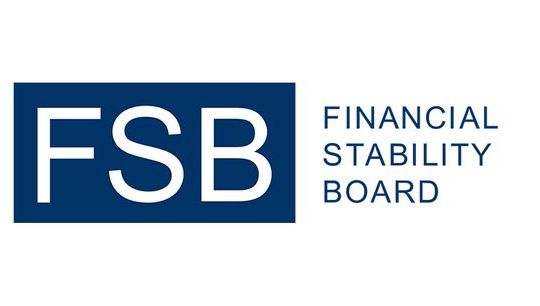Private credit: A global perspective on market developments
By Jason C. Ewart; Elizabeth Hundt Russell; Boudewijn Vermeer; Katherine Sinclair, Clifford Chance
Published: 23 September 2024
With the continued global expansion of the pool of private credit, what does the future hold? Will the boom times continue, or will enthusiasm be dampened by the resurgence of syndicated bank loans and the return of CLOs? The private credit market over the past few years has expanded exponentially but this has been against the backdrop of a very subdued Broadly Syndicated Loan (BSL) market.
Clifford Chance looks at the impact of the return of the BSL market on private credit, the options for private credit in the short term and what developments are expected in the future.
Overview of market dynamics
In the first four months of 2024, more than US$13.2 billion of private credit owed by US companies has been refinanced in the BSL market (according to data prepared by PitchBook). It is a similar picture in Europe. Private credit had stepped in to fill a funding gap in 2023 but, with the return of the BSL market, borrowers are looking for (and finding) cheaper debt. To avoid borrowers going out to the BSL market, an increasing number of private credit providers are agreeing to reprice transactions. On new money deals, sponsors are often running ‘dual-track’ processes where papers for both an underwritten TLB and a private credit club solution are being prepared concurrently.
In parts of APAC, investment banks continue to have a lot of appetite for sponsor-backed financings/ senior syndicated deals. It is difficult for credit funds to compete on pricing so a lot of them are more focused on bilateral direct lending opportunities. These deals are often highly structured, and they sometimes involve convertible instruments and warrants. The nature of some of these deals can make it difficult for them to be refinanced in the BSL market, where arrangers typically expect more standardised terms to facilitate syndication.
The ‘new normal’, at least for the foreseeable future, is increasing competition amongst lenders. In face of this, providers of private credit may look to maintain borrower friendly terms and agree to items that would often be ‘flexed’ out in the BSL market. Private credit providers also have the advantage of being able to provide bespoke flexible financing solutions in the form of hybrid capital. This will be another option for them as they look to compete in the market. The growth of the asset class will push certain private credit lenders to focus on larger cap deals and/or to diversify their investment strategies.
Refinancings and distressed loans
Given the rise of interest rates and tougher economic conditions, there has not been the wave of restructurings which might have been expected in the London market. Instead, borrower and lenders are agreeing to ‘amend and extends’, covenant waivers, additional equity injections and similar transactions.
By contrast, it is a mixed picture in Continental Europe. While a covenant holiday combined with some form of PIK interest and, potentially, a smaller equity injection was considered sufficient to stabilise the borrower group in many cases, this has not been universally successful, with some borrowers struggling with the increased debt burden arising from the PIK which can no longer be dealt with by a simple waiver process. There have been several cases where the shares were fully or partially handed over to the lenders on a consensual basis and, in rare cases, borrowers even ended up in insolvency.
In APAC, two main trends have emerged: the first is the increased use of insolvency and enforcement processes which is presenting opportunities for credit funds, particularly in the Hong Kong and mainland China real estate space, to buy out existing bank debt and look to execute credit bids or debt for equity plays for key assets in receivership or liquidation; and the other is second or third rounds of restructurings - deals that were done throughout COVID and in the year or two after are now starting to come back for another round, given the changing landscape for businesses post-COVID.
Deployment of ‘dry powder’; flexible financing solutions
Private credit providers have the ability to provide flexible, bespoke financing solutions and, for the right businesses, the use of hybrid equity instruments - such as convertible notes, vanilla preferred equity and convertible preferred equity investments - in resized capital structures is key. These instruments are attractive to investors, as they provide sizeable risk-adjusted returns along with protection against downside scenarios.
In the US, use of these junior capital instruments tends to be most common in situations where a borrower is looking to reduce leverage at an operating company level, minimise cash interest payments or address immediate liquidity concerns. Outside of these scenarios, special situations dynamics, requiring more tailored solutions unique to a specific capital structure, are where there is increasing activity.
In APAC, hybrid equity instruments are typically used in circumstances where the borrower cannot take on more debt and is looking for liquidity. Structuring these can be challenging depending on the jurisdiction – ensuring that it is not treated as debt but has debt-like protections is a key aspect of any investment using this structure. This is typically only done for the larger players where confidence can be taken from the various underlying businesses and where other investors have done something similar and funds can get comfortable with the regulatory risk.
Credit funds are increasingly innovative and willing to engage in different debt structures. In the London market, there have been examples of a convergence of senior and junior debt, with an opco financing provided by banks sitting alongside a Holdco PIK provided by private credit lenders. APAC is also seeing bespoke transactions where sponsors are looking for an extra bit of leverage. In a challenging exit environment, sponsors may see value in doubling down on their investment and unlocking the last bit of value in a portfolio company. The additional capex spend is being funded through Holdco PIKs or additional pieces of subordinated debt that sit behind a senior financing (whether it be a syndicated unitranche or senior bank debt). Many private credit funds have special opportunity strategies to allow them to fund either higher up in the structure or into potentially more volatile businesses and/or provide a combination of debt and equity.
Although a subdued M&A market has suppressed financing opportunities, the scale of ‘dry powder’ in both debt and equity funds will add pressure for managers to put funds to work and generate returns for their investors (via the traditional route rather than dividend recap transactions, an area where there has not been the increased activity that might have been expected in a slow M&A market).
Recent developments
A (comparatively) recent development has been banks setting up their own debt funds. Across Europe generally, several banks have set up their own (off-balance sheet) debt funds which are operating successfully in the market, and others have made strategic tie-ups with asset managers to get a foothold in the private credit industry. Similar trends have been observed in APAC.
In APAC (particularly Australia), the latest trend is credit funds moving into the non-sponsor/ real estate space – i.e., more corporate-style financings which use other features such as back-leverage to achieve their return hurdles. Credit funds are also more focused on the asset-based lending market and structured securitisation-style products which help slice return/ risk.
Credit funds in APAC are increasingly going into new markets. A lot of focus has been centred on India, Indonesia and Vietnam.
Future outlook
Private credit is increasingly recognised as an alternative to the public markets beyond the mid-market. There has been an increasing convergence of terms between large deals in the BSL market and those being done by private credit providers, with a number of covenant-light club-style unitranche transactions emerging for strong credits and/or strong sponsors. This has been driven by competition among direct lenders, sponsor precedent and market liquidity during 2021-22. This trend is likely to continue as private credit providers look to compete with the BSL market and deploy the funds that have been raised over the past few years.
In the US, as well as in certain segments of the APAC market (particularly in Australia), focus on liability management is the main indication that there is a convergence between the large deals in the BSL market and those being done by private credit providers. Particularly in the big-ticket market, lenders are looking for new ways to tighten some of the customary lender protections, in light of, amongst other transactions, the recent discussions involving Pluralsight.
In conclusion, while the return of the BSL market may have led to an increase in competition, there remain significant opportunities for private credit across the globe as the funds adapt to the changes in the markets and the challenges represented by the different geographies and jurisdictions.
To read the full briefing, click here.








